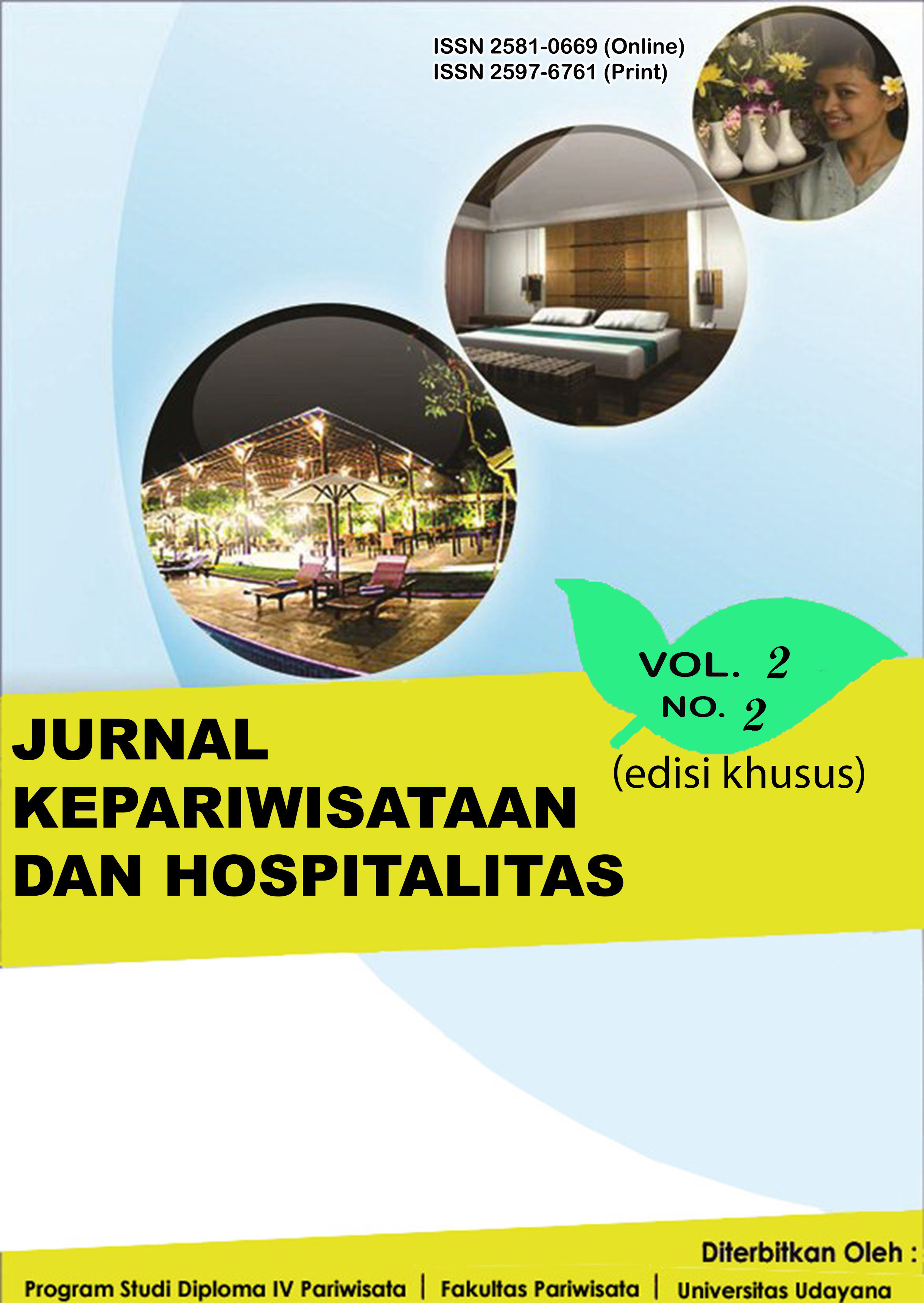Pemancangan merek (brand) ‘tanoker’ di desa wisata sumber lesung-ledok ombo-jember sebagai pembeda daya tarik wisata perdesaan
Abstract
Abstract
At present time, Tanoker has been becoming a part of typical identity locally as well as national, locating at Sumber Lesung village, Ledok Ombo Sub-District, Jember Regency, East Java, Indonesia. Tanoker means cocone. Intentionally, giving brand of Tanoker is to convey an image that cocone will be a beautiful butterfly attracting people to enjoy. The tourist site attraction of Tanoker at Ledokombo is to survive and modernize the traditonal and local playing of old times. Firstly, the purpose of the research is to dig up an urgency of village branding comprehensively, that is the strengths, weaknesses, opportunities, and its threats); secondly is to formulate branding for the sake of village tourism development; thirdly is to recommend the urgency of village branding to the tourist stakeholders, particularly for the local government to establish in village tourism policy. The researcher carries out SWOT analysis in order to get sufficient data by means of field observation, interview and questionaire to the whole respondents. This research is more qualitative analysis. The use of the research will be useful for some parties, particularly for village governments, because of every village needs branding based on each spesific characteristics they have. Tge result of this research will be sent to the accredited national journal of tourism.
Keywords: branding, village tourism, SWOT analysis, Tanoker brand.













